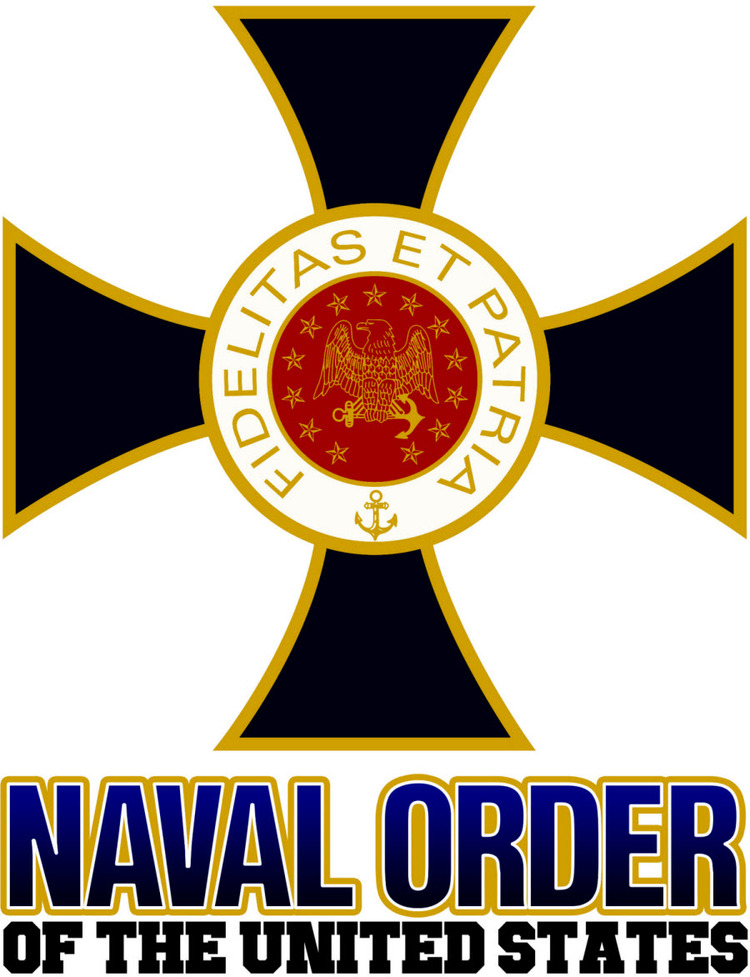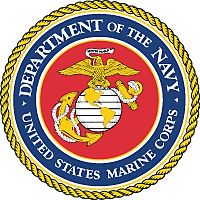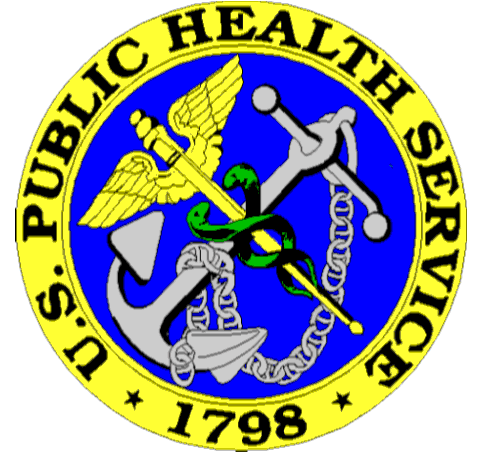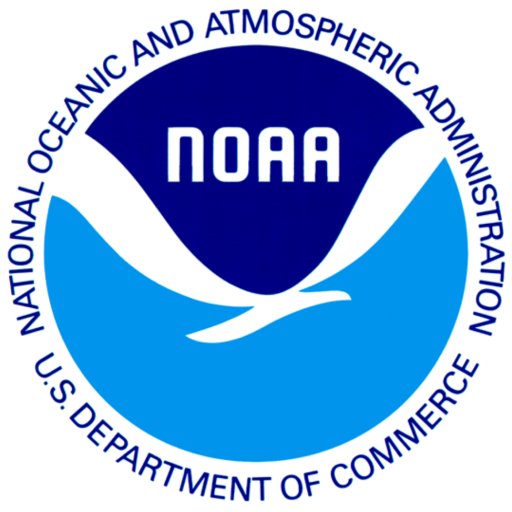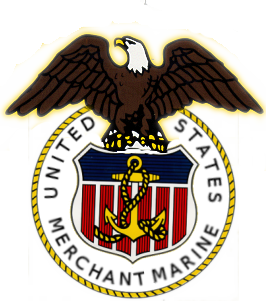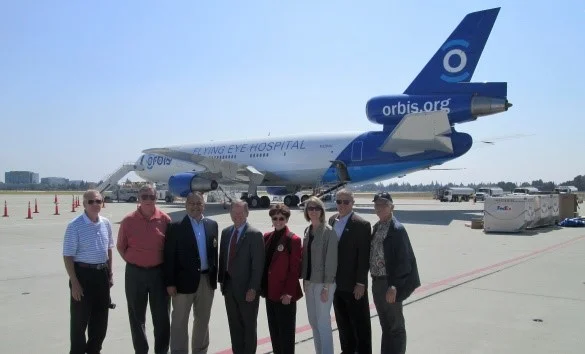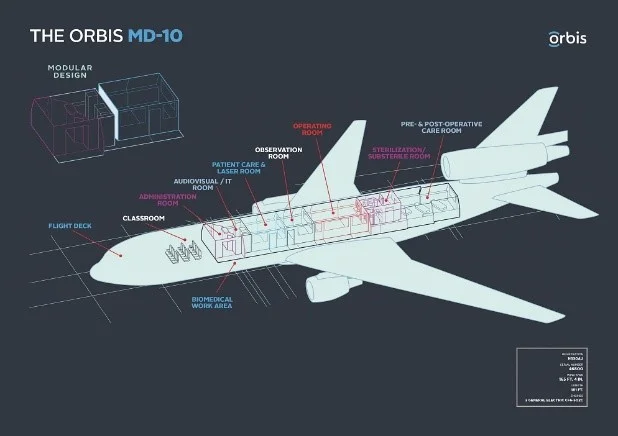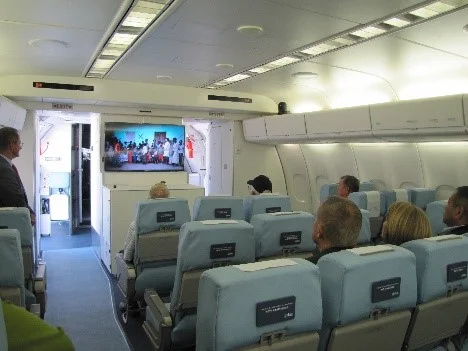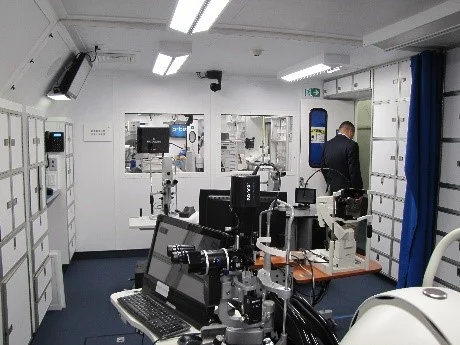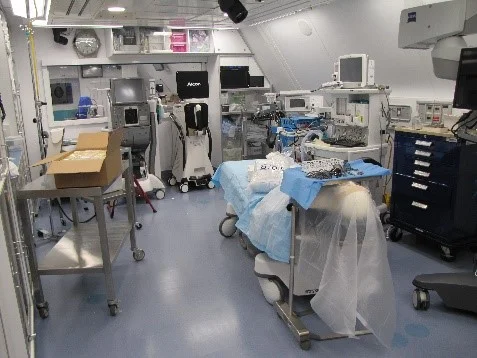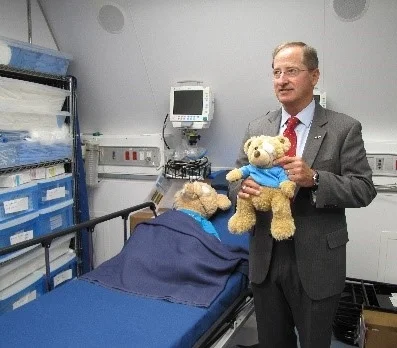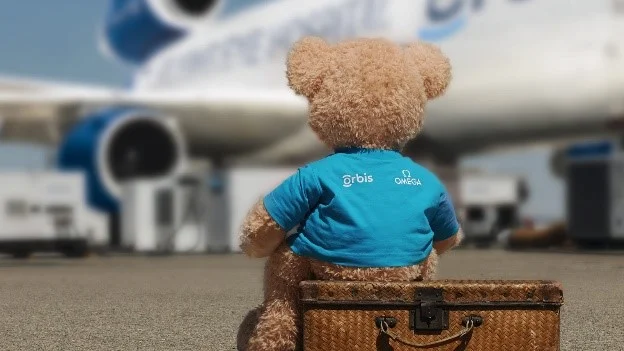by Michele Lockwood, CAPT USN (Ret.)
Commander General
"ORBIS" MD-10 at Moffett Field with San Francisco Commandery Companions-Sandy Lockwood, friend Bill Hawk, Allan Cruz, Bob Ranck, Michele Lockwood, Sarah Koller, Dennis Koller, and Bob Hansen.
The gleaming blue and white MD-10 sits majestically on the tarmac at Moffett Field in Mountain View, California. The white “ORBIS.org” on the blue engine in the tail with “Flying Eye Hospital” on the fuselage piques curiosity and interest. A quick exploration of the ORBIS.org website reveals that the aircraft was donated by FedEx and custom designed to incorporate the latest in avionics, hospital engineering, technology, and clinical expertise.
The aircraft includes an optical laboratory, a fully accredited surgical suite, treatment rooms, and a 48 seat classroom. (If you remember from the 2015 Naval Order Congress that Frederick Smith, CEO and Founder of FedEx, was our Admiral of the Navy George Dewey Award recipient. The Award recognizes the civilian achievement of a former sea service member. Mr. Smith was a Marine who served his country in Vietnam.)
According to Bob Ranck, President and Chief Executive Officer of ORBIS, the Flying Eye Hospital is an American certified hospital and the world’s only state of the art teaching eye hospital on board an aircraft. The plane provides hands-on training to local eye care professionals in the heart of under resourced communities around the world. Not only does it ensure that a sustainable eye care legacy is left in its wake, but is also acts as a flying ambassador waving the flag for improved eye care services wherever it lands.
The lab, surgical suite, treatment and recovery rooms, and the classroom are individual modules fitted into the aircraft during its reconfiguration from a FedEx cargo plane to a fully functional hospital.
The classroom with its television and sound system is a hub for skills transfer, learning, and innovation. The latest in 3D technology and broadcasting capabilities ensures that ORBIS can train more doctors, nurses, and medical professionals than ever before. The TV is connected directly to the operating room, so that the medical students can watch the operation up close and personal. In addition, all the optical examinations and surgical imagery are broadcast to the local support hospital where additional surgeons and medical staff can gain training through observing the procedures performed on the aircraft.
48 seat classroom on board the MD-10 aircraft.
Laser and Examination Room on board the MD-10 aircraft.
The optical laboratory consists of a laser treatment and examination room, the patients can be examined, then undergo laser surgery. The two laser machines can treat glaucoma and diabetic retinopathy patients. Both laser machines can be connected to cameras for transmission to the classroom. The doctors doing the treatment can lecture the students in the classroom while the doctors are working on the patients.
Operating Room on board the MD-10 aircraft.
There is also a cataract surgery simulator in the exam room. All the steps necessary to perform cataract surgery are set up for the doctors to practice each step before the actual surgery.
Bob Ranck, President and CEO of ORBIS International, demonstrates the usefulness of the Omega teddy bears in the recovery room of the MD-10 aircraft. ORBIS carries 700-pounds of teddy bears during a typical mission.
Youngsters are prepared for surgery and also recover in the FedEx donated recovery room where two standard hospital beds are located. Teddy bears donated by Omega SA, maker of Omega watches, serve as ambassadors of good will and sympathetic friends to youngsters about to undergo surgery. The nurse uses the bear to show a youngster how an IV works and what an oxygen mask looks like when worn. When the child wakes up after surgery, the teddy bear wears a patch over its eye, just like the child’s. The child transfers its concerns and fears to the teddy bear who has undergone the same operation, and the teddy bear gets to go home with the child.
ORBIS has served 92 countries since 1982, and trained 30,326 medical professionals, including doctors, nurses, biomedical engineers, and others as well as screened or examined over 2.1 million patients on the flying hospital or at partner institutions.
ORBIS accomplishes its mission through a dedicated volunteer network of medical professionals who devote one or two weeks of their personal time annually to the program. Pilots are also volunteers who work for FedEx, who use their time off to fly the ORBIS aircraft.
Logistics is not easy. A full time staff headquartered in New York City must work out the volunteer medical staff and pilot scheduling, arrange travel accommodations (most of the volunteer staff fly independently of the ORBIS aircraft to their destinations and live in hotels during their tours), negotiate diplomatic and local requirements, provide credential certifications for the medical staff within the selected countries, provide financial and accounting services, solicit donations, and arrange for security and supplies.
ORBIS is proud of how it uses its funds which are all donated: 89% of its budget goes to programs and services, 8% to fundraising, and 3% to management and general overhead. Visit ORBIS.org and be a part of the team!
The ORBIS teddy bear stays behind with the young patient!
When the plane arrives at its destination, the children can’t see the plane, but they do when the plane leaves. That truly is a miracle!
Fred Smith is proud of FedEx and what it’s doing to improve the quality of eye care around the world. According to Bob Ranck, "You could not have a better partner running an airline than Fred Smith (of FedEx). He (Smith) told me that ORBIS will be part of FedEx as long as he is alive."
